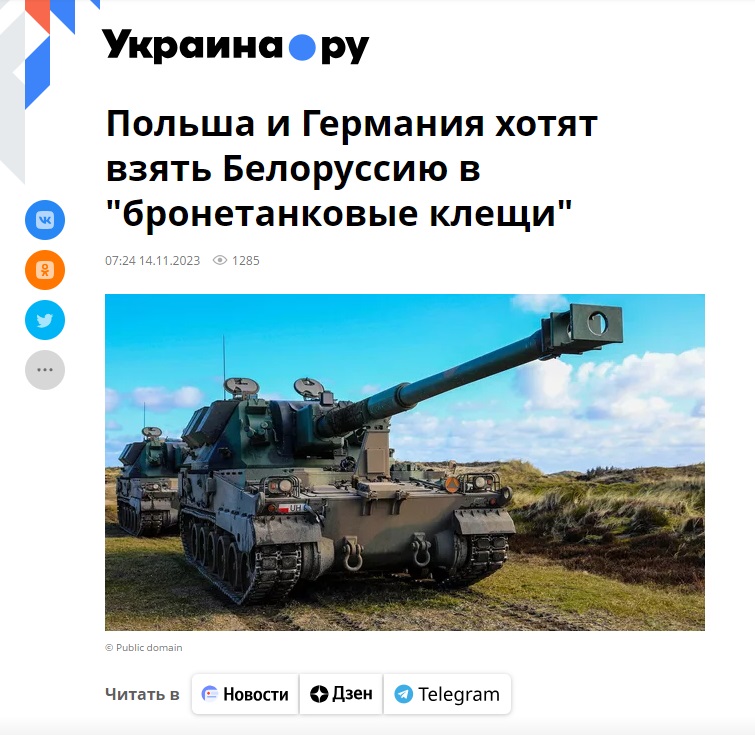After a momentary break, the Russian disinformation machine again refreshed the narrative that portrays Poland as a “threat to peace” and a “direct threat” to the Belarusian state. As part of the broadcasted messages, both Russian and Belarusian sources focus (in the context of Poland) on presenting Poland as a country that continuously attracts new units of armed forces from the east, which is supposed to be related to “preparations” for armed aggression.
Both Minsk and Moscow comment on reports regarding the modernisation of the Polish army and the development of Poland’s defence potential to strengthen a certain narrative. Events such as the announcement of the formation of an armoured battalion in Czartajew (eastern Poland) are presented as a “hostile act”, “provocation” or “proof” of Warsaw’s “aggressive intentions”. In order to distort the image of reality, there is a deliberate silence about the hybrid operation carried out by Minsk and Moscow on the border or about other actions of a provocative nature and attempts to build pressure (e.g., the issue of the deployment of Russian tactical nuclear missiles in Belarus). Moreover, there is no mention of the most telling fact – the sharing of Belarusian territory and airspace to Russian troops to launch a completely unjustified (full-scale) war against Ukraine.
The activity of Minsk and Moscow in portraying Poland as an “aggressor” and “provocateur” serves several fundamental functions. Not only does it distract Belarusians and Russians from the aggressive actions of Moscow and Minsk, but it is an element of positioning Poland as an “extremely hostile” country that is used to neutralise pro-democratic initiatives/activists in Belarus (they are put under pressure by portraying them as “traitors” who undertook cooperation with the “future aggressor” – criticism of the authorities is presented as “activity initiated by the Polish services”). Furthermore, all actions taken are intended to discourage Belarusians from leaving the country and also serve to divert public attention from current issues (such as the deteriorating economic situation).
Narratives creating Poland as a “rising empire”, “aggressive neighbour” and “enemy of peace” cyclically manifest depending on the current needs of Moscow and Minsk. In the current situation, lobbying for a given narrative seems to be of greater interest to the Belarusian side than the Russian side. The portrayal of Poland as a country “preparing to attack” Belarus is combined with other activities aimed at blaming Warsaw for the crisis in Polish-Belarusian relations. Here, it is worth recalling the statements of Lukashenko and other Belarusian officials regarding Minsk’s “willingness” to reach an agreement with Poland (including the issue of wishes expressed by Lukashenko to Poles on Independence Day).
The given actions (especially in the discussed context) are a clear attempt to portray Belarus as a country “seeking peace”, contrasting with Poland’s rejection of “friendly gestures”. These actions are, therefore, aimed at blaming Poland for the current crises, which whitewashes the image of Minsk and Moscow (serving both domestic and foreign goals).
Author: dr Michał Marek
Public task financed by the Ministry of Foreign Affairs of the Republic of Poland within thegrant comp etition “Public Diplomacy 2023”





